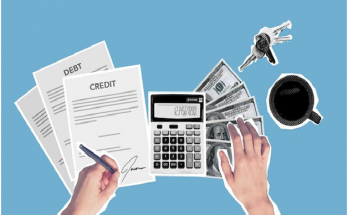In the realm of financial choices, securing a loan involves navigating between two distinct paths: secured and unsecured loans. Each type holds its own significance in the economic landscape.

Secured loans, tethered by collateral such as homes or cars, provide a stable foundation, offering lower interest rates due to reduced risk for lenders.
On the other hand, unsecured loans set sail without the anchor of collateral, relying on the borrower’s creditworthiness and financial history.
This exploration delves into the nuances of these financial vessels, shedding light on their characteristics and implications for those embarking on their economic journey.
What is a Secured Loan?
When it comes to securing economic balance, a secured loan acts as a sturdy anchor, backed by collateral like your home or car, where tangible assets serve as a guarantee for lenders.
The safety provided is akin to a secure internet, lowering the risk for the lender and frequently resulting in lower interest rates for the borrower.
Explore secured loans while keeping in mind specific registration processes, the diupmsme.upsdc.gov.in registration, for comprehensive financial planning.
- Browsing and Privacy: Safeguarding Your Financial Odyssey
- Securing Your Loan: A Personal Exploration
As you embark on your financial voyage, it’s crucial to understand the impact of your online presence on loan approval. Lenders often scrutinize your digital footprint, evaluating your financial responsibility and stability. Be mindful of your online activities, ensuring a smooth sail toward securing a loan.
What is an Unsecured Loan?
Contrary to the moorings of secured loans, unsecured loans set sail without the weight of collateral. These loans rely solely on the borrower’s creditworthiness, financial history, and income.
While unsecured loans provide a sense of freedom from collateral constraints, they often come with higher interest rates, reflecting the increased risk for the lender.
- Privacy in Loan Applications: Navigating the Digital Horizon
- Smooth Sailing: Privacy Considerations
In the digital age, applying for a loan involves sharing a plethora of personal information. Safeguard your privacy by opting for secure websites and ensuring encrypted connections during the application process.
Your financial details are the compass guiding your loan approval; ensure they are shared securely to avoid any unforeseen storms.
What are Secured vs. Unsecured Loans?
Secured loans require collateral, like a home or car, reducing risk for lenders and often resulting in lower interest rates. Unsecured loans, lacking collateral, rely on creditworthiness, carrying higher interest rates due to increased lender risk.
Secured Loans:
- Collateral Requirement: Secured loans necessitate collateral, such as a home or car, offering a safety net for lenders.
- Risk Mitigation: The presence of collateral reduces the lender’s risk, resulting in generally lower interest rates.
- Asset Seizure: In the event of default, the lender has the right to seize the collateral to recover losses.
- Examples: Mortgages and auto loans are common types of secured loans.
Unsecured Loans:
- No Collateral: Unsecured loans do not require collateral, relying solely on the borrower’s creditworthiness and financial history.
- Higher Risk: Due to the absence of collateral, lenders face higher risk, reflected in higher interest rates for borrowers.
- Examples: Credit cards, personal loans, and student loans often fall into the category of unsecured loans.
In summary, secured loans provide stability with collateral, while unsecured loans offer flexibility but typically come with higher interest rates due to increased risk.
How does collateral affect interest rates in secured loans?
Collateral significantly influences interest rates in secured loans. Firstly, it acts as a safety net for lenders, mitigating risk and inspiring confidence, leading to lower interest rates.
the value and quality of the collateral directly impact the loan terms; higher-value assets or those with a stable market value may result in more favorable rates.
Lastly, collateral provides lenders with a source of recourse in case of borrower default, allowing them to recover losses, further reducing the perceived risk and contributing to lower interest rates for borrowers. Overall, collateral serves as a crucial determinant in shaping the cost of secured loans.
Can my online presence impact the approval of an unsecured loan?
Yes, lenders frequently evaluate your online activities, including interactions with loan giving apps for students, to assess financial responsibility.
Maintaining a positive digital footprint can enhance your chances of unsecured loan approval, as responsible online behavior contributes to a favorable impression on potential lenders.
What happens if I default on a secured loan?
In the unfortunate event of default on a secured loan, the lender has the right to seize the collateral. It’s crucial to communicate with the lender to explore alternative solutions.
Are unsecured loans riskier than secured loans?
Yes, unsecured loans carry higher risk for lenders, as there is no collateral. This often translates into higher interest rates for borrowers to compensate for the increased risk.
In Conclusion
This comprehensive exploration of secured and unsecured loans reveals their distinct features. Secured loans, anchored by collateral, offer stability with lower interest rates, while unsecured loans, sailing without collateral, provide flexibility but come with increased risk and higher interest rates. Privacy considerations in the digital age play a crucial role in loan approval. Maintaining a positive online presence is vital for unsecured loan applicants.
In the financial journey, understanding these nuances guides borrowers toward informed decisions and successful navigation.



